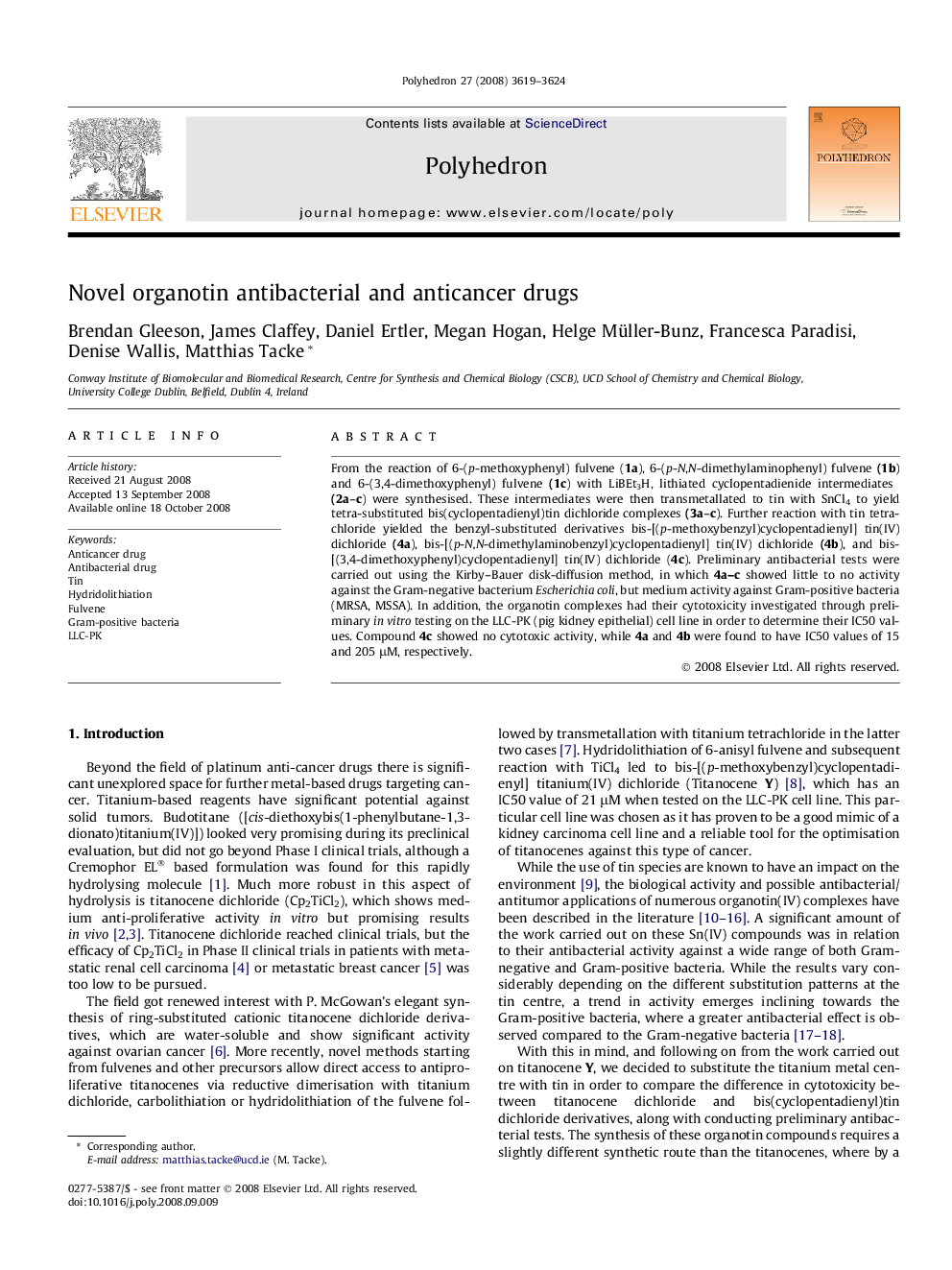| Article ID | Journal | Published Year | Pages | File Type |
|---|---|---|---|---|
| 1335255 | Polyhedron | 2008 | 6 Pages |
From the reaction of 6-(p-methoxyphenyl) fulvene (1a), 6-(p-N,N-dimethylaminophenyl) fulvene (1b) and 6-(3,4-dimethoxyphenyl) fulvene (1c) with LiBEt3H, lithiated cyclopentadienide intermediates (2a–c) were synthesised. These intermediates were then transmetallated to tin with SnCl4 to yield tetra-substituted bis(cyclopentadienyl)tin dichloride complexes (3a–c). Further reaction with tin tetrachloride yielded the benzyl-substituted derivatives bis-[(p-methoxybenzyl)cyclopentadienyl] tin(IV) dichloride (4a), bis-[(p-N,N-dimethylaminobenzyl)cyclopentadienyl] tin(IV) dichloride (4b), and bis-[(3,4-dimethoxyphenyl)cyclopentadienyl] tin(IV) dichloride (4c). Preliminary antibacterial tests were carried out using the Kirby–Bauer disk-diffusion method, in which 4a–c showed little to no activity against the Gram-negative bacterium Escherichia coli, but medium activity against Gram-positive bacteria (MRSA, MSSA). In addition, the organotin complexes had their cytotoxicity investigated through preliminary in vitro testing on the LLC-PK (pig kidney epithelial) cell line in order to determine their IC50 values. Compound 4c showed no cytotoxic activity, while 4a and 4b were found to have IC50 values of 15 and 205 μM, respectively.
Graphical abstractThree benzyl-substituted bis(cyclopentadienyl)tin dichloride derivatives were synthesised through the hydridolithiation reaction of appropriately substituted fulvenes with LiBEt3H. Within the synthesis of the three organotin compounds are reported along with a structural discussion of an isolated six co-ordinated tin(IV) species. Additionally, the compounds were tested for their antibacterial and anticancer activity.Figure optionsDownload full-size imageDownload as PowerPoint slide
